Vintage Treasures: Clash by Night by Henry Kuttner and C.L. Moore
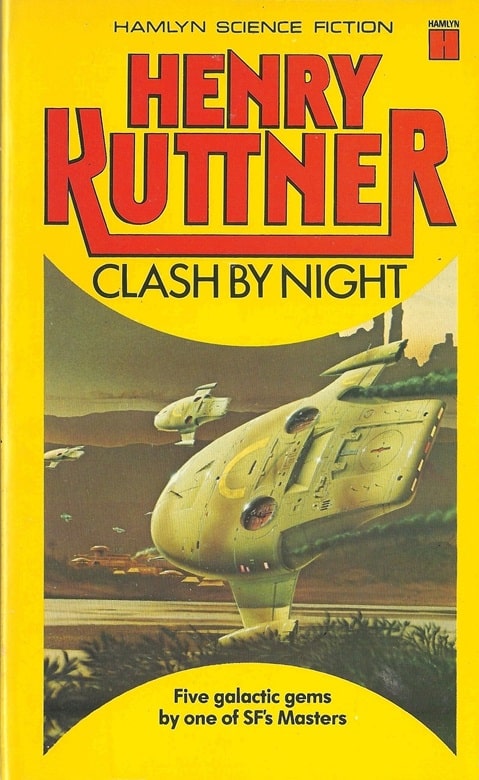 |
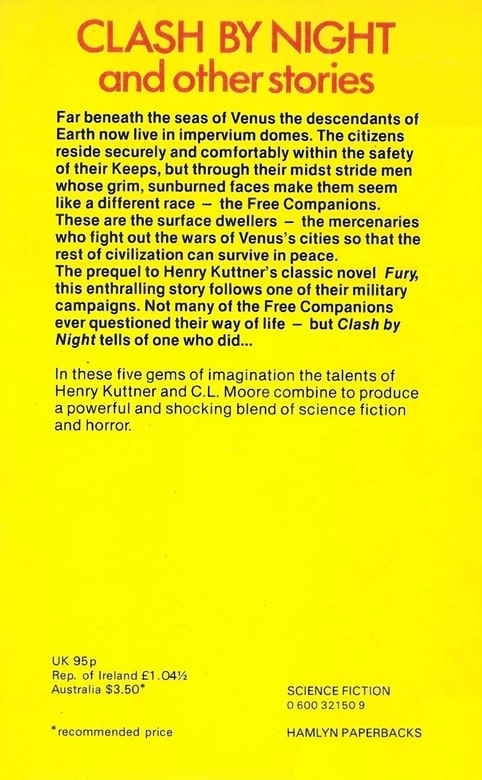 |
Clash by Night (Hamlyn Paperbacks, 1980). Cover by Chris Moore
I’m a big fan of the short fiction of Henry Kuttner, one of the great genre pulp writers, and earlier this year I stumbled on a curiosity: a Hamlyn (UK) paperback collection of Kuttner’s pulp tales which has never been reprinted in the US: Clash by Night.
Clash by Night collects five Kuttner tales from the heyday of the science fiction pulps, 1943-1952. The stories collected here were originally published in Astounding Science Fiction, Thrilling Wonder, and Space Science Fiction. They include some of Kuttner’s most acclaimed SF, and some that has been rarely reprinted.
Another thing they all have in common: They were all written with his wife, C.L. Moore, whom the editor didn’t see fit to credit on the cover, for reasons of obvious sexism. It’s small remedy to correct that slight in the title of this article, but I did it anyway.
[Click the images for bigger versions.]
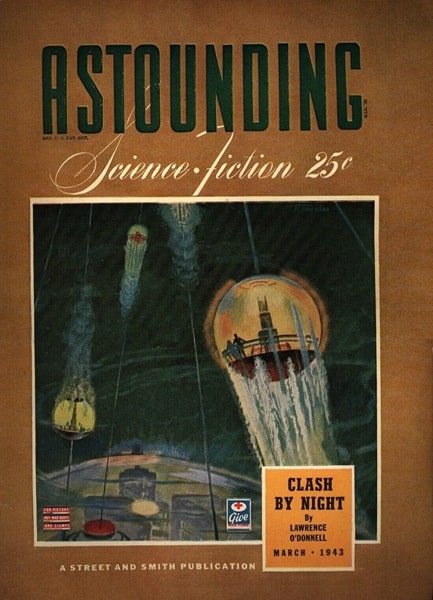 |
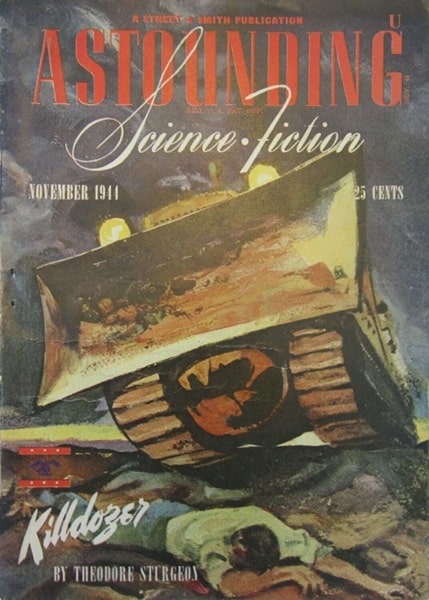 |
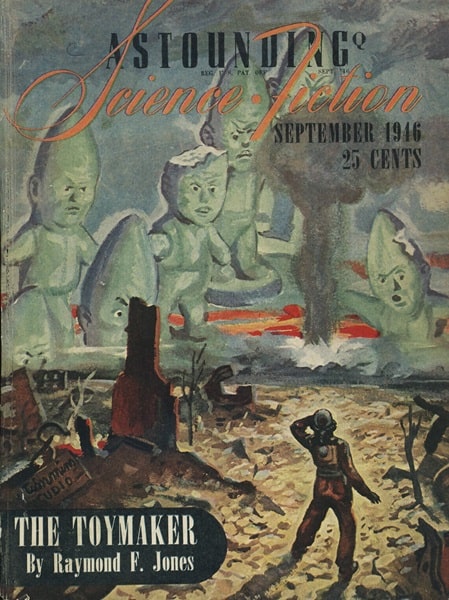 |
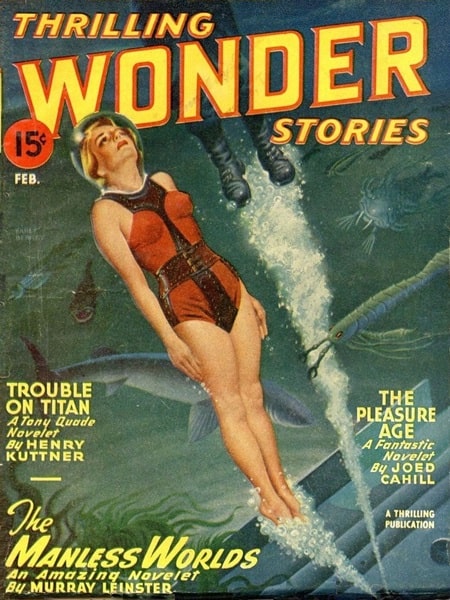 |
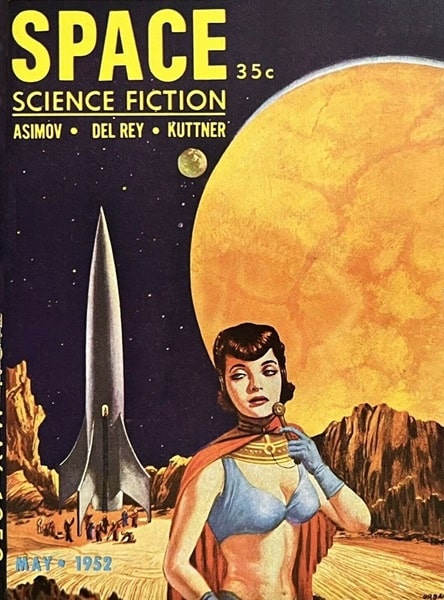 |
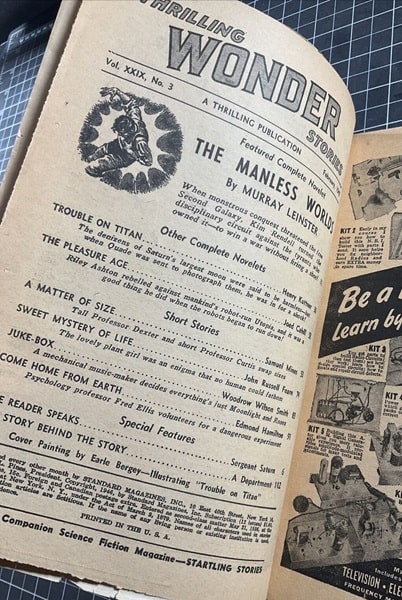 |
Original magazine appearances: Astounding Science Fiction, March 1943, November 1944
and September 1946, Thrilling Wonder Stories, February 1947, and Space Science Fiction,
May 1952. Covers by William Timmins (x3), Earle Bergey, and Orban
The title novella, “Clash by Night,” was originally published in Astounding, and was nominated for the 2019 Retro Hugo for Best Novella of 1943 (it lost out to The Little Prince by Antoine de Saint-Exupéry, Bedknob and Broomstick by Mary Norton, and “The Dream-Quest of Unknown Kadath” by H. P. Lovecraft, and there’s no shame in bowing to competition like that).
I first encountered “Clash by Night” in The Astounding-Analog Reader, edited by Harry Harrison and Brian W. Aldiss, which I discussed right here back in 2019. Here’s the snippet that first intrigued me, from the editors’ intro.
Like Asimov’s, Heinlein’s was a cool fiction. For Kuttner, glamor and excitement came first, and science second or third. His ability to tell a story seem much more natural than theirs. By this date, he was prolific and well known, writing under many names; in “Clash by Night” we can watch the great, the ingenious Kuttner, diving and darting in and out of the mythological seas of his imagination in yet another disguise….
In the comments James Enge wrote:
I wish Kuttner and Moore had returned more often to the setting of “Clash by Night.” I liked Fury, the Kuttner novel set in the same world, but it seems like there could have been a lot more.
“Clash by Night” was the first installment in the storied pulp series Keeps, which as James notes included its more famous sequel Fury (serialized in three parts in Astounding, starting in the May 1947 issue), and two novels set in the same world by David Drake, Surface Action (1990) and The Jungle (1991).
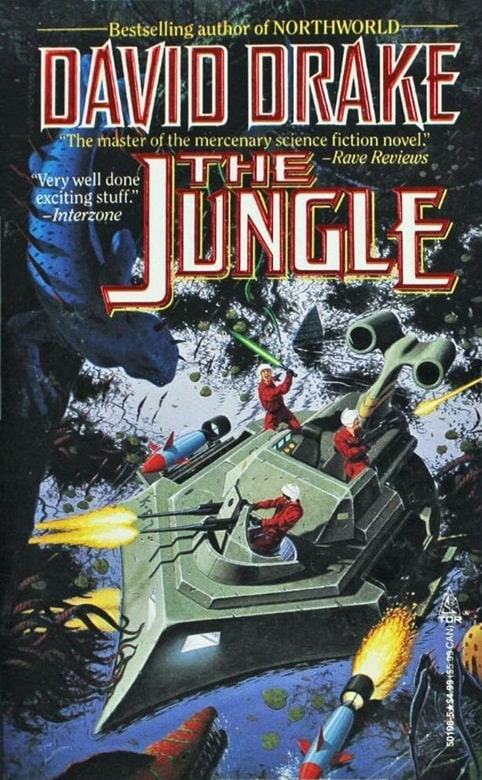 |
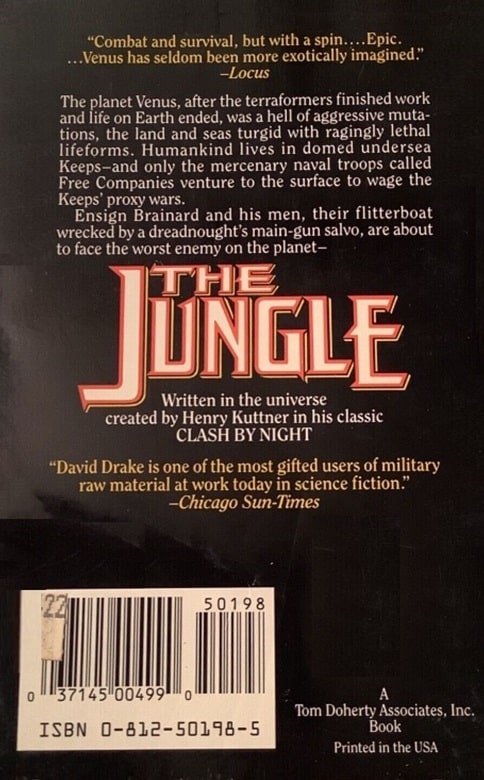 |
The Jungle by Dave Drake, set in “the universe created by Henry Kuttner in his
classic Clash by Night” (Tor Books, November 1992). Cover by Roger Loveless
Naturally, because the world isn’t fair, and it’s especially unfair to women who dare call themselves science fiction writers, the 90s-era Tor volumes credited only Kuttner as the creator of “Clash by Night.”
Clash by Night also contains “When the Bough Breaks,” 4th place winner of the 2020 Retro Hugo for Best Novelette (losing out to “City” by Clifford D. Simak, “No Woman Born” by C. L. Moore, and “Arena” by Fredric Brown, and again, I think the electorate got it right).
The other stories are “Juke-Box,” “The Ego Machine,” and the classic “Vintage Season,” one of the most acclaimed and reprinted SF stories of the 20th Century.
Here’s a look at the interior art for “Juke-Box,” from Thrilling Wonder.
Interior illustration for “Juke-Box,” published under the pseudonym Woodrow Wilson Smith
Here’s the complete Table of Contents.
Introduction by Peter Pinto
“Clash by Night” by Henry Kuttner and C. L. Moore (Astounding Science-Fiction, March 1943)
“When the Bough Breaks” by Henry Kuttner and C. L. Moore (Astounding Science Fiction, November 1944)
“Juke-Box” by Henry Kuttner and C. L. Moore (Thrilling Wonder Stories, February 1947)
” The Ego Machine” by Henry Kuttner and C. L. Moore (Space Science Fiction, May 1952)
“Vintage Season” by Henry Kuttner and C. L. Moore (Astounding Science Fiction, September 1946)
Here’s John W. Campbell’s blurb for “Clash by Night” in the TOC for the March 1953 Astounding. The story appeared under Kuttner and Moore’s famous byline Lawrence O’Donnell, the name they used for much of their collaborative fiction.
John W. Campbell’s blurb for “Clash by Night,” from the March 1953 Astounding
What do modern readers make of these stories?
Here’s the most popular review at Goodreads, from July 2022.
I enjoyed this story, particularly the setting of Venus. I really liked Kuttner’s novel Fury set in the same world, and enjoyed returning to it…. it was really about Scott’s crisis of faith in his life’s work as mercenary, more than the romantic relationships per se. I liked the businesslike nature of the mercenaries, particularly the punch-clock villain portrayal of the enemy company near the end… An enjoyable story that introduces a cool world. I wish Kuttner and Moore had written more stories in the Keeps series, but I’m looking forward to checking out the sequels written by David Drake.
Here’s the inside cover and Peter Pinto’s introduction for Clash by Night.
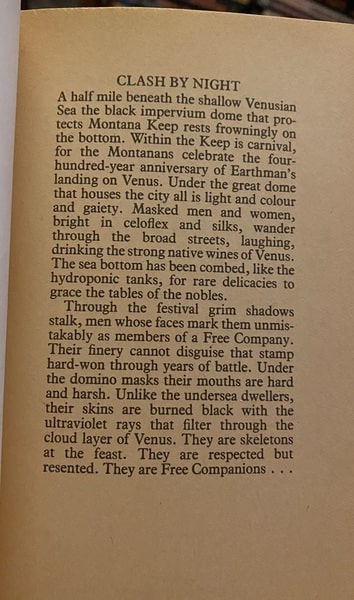 |
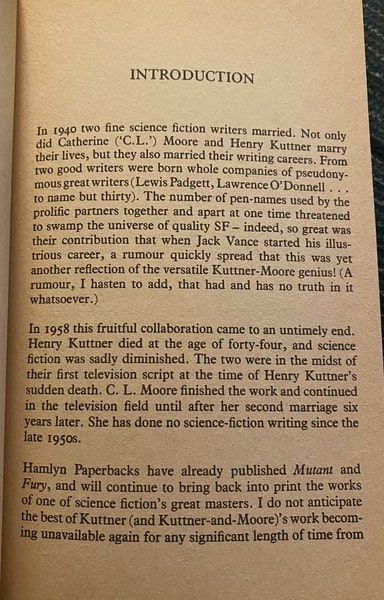 |
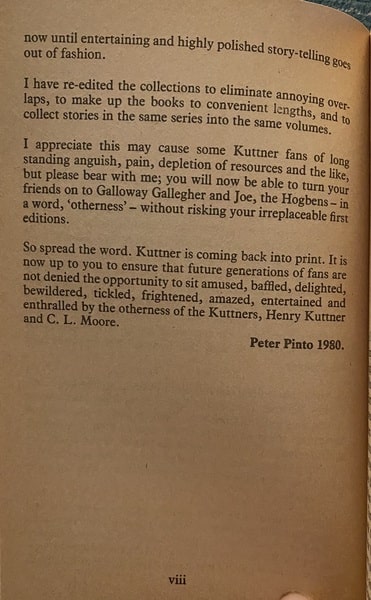 |
Inside cover and Peter Pinto’s introduction for Clash by Night
“Vintage Season” still wins fans for Moore and Kuttner today. Here’s a review that appeared online two days ago, on December 14, 2023.
A magnificent story, a beautiful work of art, perfect form, perfect prose … all the more remarkable that it was written in 1946, smack dab in the middle of the pulp era when literati of certain pretensions commonly assumed that nothing of artistic worthiness was being created in genre fiction … not sure I can think of another story so accomplished until Le Guin came onto the scene in the 60s … Lester del Rey describes it well in his introduction to the Best of C.L. Moore anthology:
“Moore’s masterpiece … a showpiece for all the talents of C. L. Moore. It blends the disparate elements of horror and beauty, alien culture and human feelings, progress and decadence. And it has the sense of inevitability needed for great fiction, skillfully combined with the uncertainty of a fine suspense story.”
One of the reasons I enjoy reading stories in their original magazine appearances is the wonderful artwork. Here’s a splendid piece by Orban for Lester del Rey’s “Pursuit,” which appeared in the same issue as “The Ego Machine.”
Interior art by Orban for Lester del Rey’s “Pursuit” (Space Science Fiction, May 1952)
I bought my copy of Clash by Night on eBay this year for about $6.
Clash by Night was published by Hamlyn Paperbacks in the UK in 1980. It is 216 pages, priced at £0.95. The cover is by Chris Moore. It has never been reprinted in the US, and there is no digital edition.
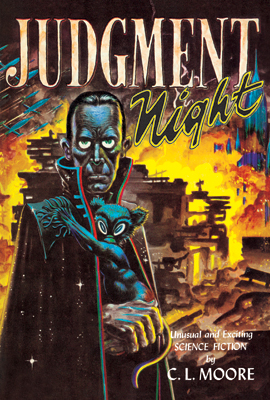 Our recent coverage of C.L. Moore includes:
Our recent coverage of C.L. Moore includes:
Judgment Night by CL Moore
The Golden Age Of Science Fiction: The 1973 Forry Award: C. L. Moore by Rich Horton
Vintage Treasures: Doomsday Morning
Horrors, Marvels, Gods And Demons: C.L. Moore’s Tales Of Northwest Smith
Birthday Reviews: C.L. Moore’s “Lost Paradise” by Steven H Silver
Smugglers, Alien Vampires, And Dark Dimensions: The Best Of C. L. Moore by James McGlothlin
Happy 100th Birthday, C. L. Moore!
Black God’s Kiss by C. L. Moore by Ryan Harvey
More Haffner Goodness: Detour to Otherness
“Jirel, Ma Joie!” (In Which I Encounter My First C.L. Moore) by C.S.E. Cooney
Jirel of Joiry: The Mother of Us All by Ryan Harvey
Judgment Night: Space Opera and More From One of the Female Pioneers of the Genre by Paul Di Filippo
And our recent coverage of Henry Kuttner is here:
Birthday Reviews: Henry Kuttner’s “Ghost” by Steven H Silver
From the Vaults: The Lands of the Earthquake by Fletcher Vredenburgh
A Neglected Master: The Best of Henry Kuttner by James McGlothlin
Earth’s Last Citadel by Kuttner and Moore
The Watcher at the Door: The Early Kuttner, Volume Two, edited by Stephen Haffner
The Best of Henry Kuttner
Fantasy Face-Off: Henry Kuttner’s Elak of Atlantis vs. Robert E Howard’s Conan the Cimmerian by Connor Gormley
The Startling Worlds of Henry Kuttner
Henry Kuttner’s “The Graveyard Rats”
Announcing the Winner of Thunder in the Void from Haffner Press!
Henry Kuttner’s Thunder in the Void
Black Gate Kuttner Contest: And the Winners Are…
Terror in the House: The Early Kuttner, Volume One
More Haffner Goodness: Detour to Otherness
Robots Have Tales: Henry Kuttner’s Gallagher Stories by James Enge
See all of our recent Vintage Treasures here.
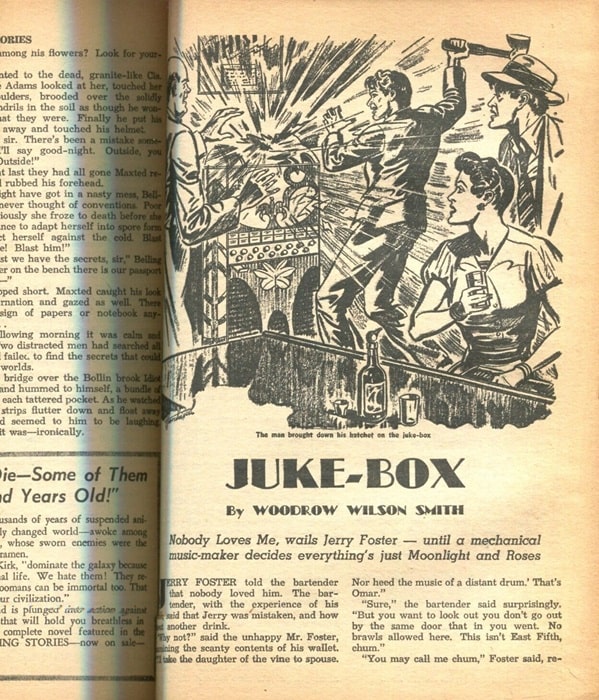
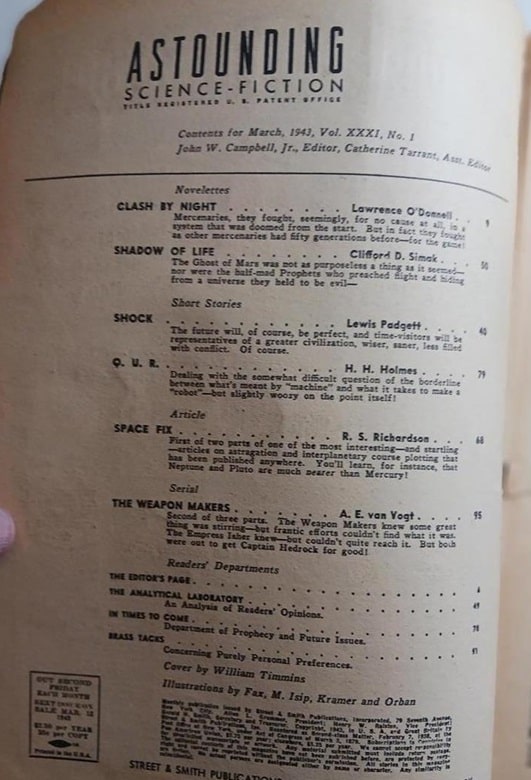
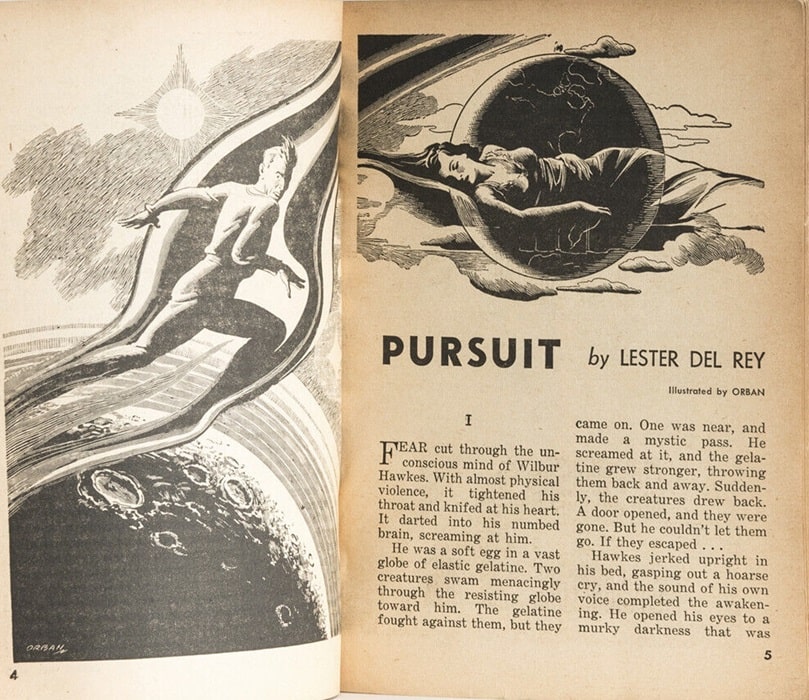
Kuttner and Moore were two of the greatest, or rather, three of the greatest, each individually and then together as a team. The night after I first read Moore’s story “Shambleau”, the one where Northwest Smith (now there’s a name for a pulp hero!) encounters an alluring alien succubus/medusa/vampire woman, I had the most extraordinarily vivid nightmare of my life, sprung directly from the story.
Now THAT’S writing!
“Vintage Season” truly is one of the greatest SF stories of all time. I reread it last year for the Worldcon’s “1946 project” and it more than holds up. As I put it: “Vintage Season” is the runaway winner here. One of the greatest SF stories of all time — a beautifully written and quite powerful story about a man who lets his house to a group of strange people — learning eventually that they are time travel tourists, and that they are fascinated by disasters. It is usually regarded as primarily a C. L. Moore story — and I agree with primarily — but it does seem to me that Kuttner also likely had a hand in it.
As for the rest — I really need to reread “Clash by Night” — and I have not read Fury nor the Drake sequels. Normally I’d be wary of latter-day sequels like that, but I bet Drake did a good job.
In 2004 Baen put out a paperback with the two Drake sequels, Surface Action and The Jungle, titled Seas of Venus. As soon as I laid eyes on the lurid cover (guys on the deck of a submarine blasting an attacking octopus with some kinda laser) I knew I had to have it.
Drake gives copious credit to Kuttner and Moore in his intro, and offers his surmise about the credit split on Clash by Night: “It was years before I learned that Lawrence O’Donnell was a pseudonym of C.L. Moore and her husband, Henry Kuttner. Most O’Donnell stories were written primarily by Moore, but this one seems to have been Kuttner’s work in large measure. (After Kuttner’s death, Moore renewed the copyright in Kuttner’s name alone.)”
I dunno. The mysteries of collaboration will always remain,,, well, mysteries, especially when the partnership is as intimate as that between a married couple. Lee and Kirby, Lennon and McCartney, Shaq and Kobe, Kuttner and Moore – whatever the precise mix, I just know I like the results.
Talk about pseudonyms! After you finish “Lawrence O’Donnell”, you get “Lewis Padgett” (also Moore/Kuttner). And “H. H. Holmes” (aka Anthony Boucher, who was born William White). I wonder how sf/f readers of the pulps handled the pen names. Were they surprised to find out whom they were actually reading? Or was it so common as to be rather open secrets? The closest I can think of in my reading would have been the big shock about James Tiptree/Alice Sheldon.
Elron Hubbard used a few pseudonyms, too, and JWC started publishing Heinlein’s non-Future-History stories under the pseudonym Anson MacDonald. I remember a story from The Early Asimov about him pressuring Asimov to use a pseudonym, and of course most of JWC’s best work as a writer was published under the “pseudoplume or nom de nym” Don A. Stuart. He may have been a little nuts of the subject of pseudonyms, as he was on a number of subjects.
Guessing about pen-names (particularly Kuttner’s) became pretty frequent among dedicated fans. Damon Knight talks about it in In Search of Wonder: “The accumulating mass of his pseudonyms reached the critical point in fandom sometime in the middle forties, resulting in the so-called Kuttner Syndrome; a baseless report that Jack Vance was Kuttner, originated by Ted Dikty in 1950, is still being refuted at least once a month at this writing [1956].”
I went looking through my Kuttner and Moore books to see if I had a volume containing “Clash by Night”, but I could only turn up my copy of Fury (1975, Magnum/Prestige, an imprint of Lancer Books – talk about pseudonyms!), which does have a great introduction by Ms. Moore, in which she discusses pseudonyms and collaborating with her husband:
“Yesterday, I reread FURY for the first time in many years, and I’m not surprised, but interested, to see in it the two recurring themes that emerge quite explicitly in nearly everything we wrote. Hank’s basic statement was something like, ‘Authority is dangerous and I will never submit to it.” Mine was, ‘The most treacherous thing in life is love.” In FURY these two ideas underlie everything that happens. I can identify which parts I contributed and which he did by this alone.
FURY was written by about one and an eighth persons. We collaborated on almost everything we wrote, but in varying degrees. It worked like this. After we’d established through long discussion the basic ideas, the background and the characters, whichever of us felt like it sat down and started. When that one ran down, the other, being fresh to the story, could see what ought to come next, and took over. The action developed as we went along. We kept changing off like this until we finished. A story goes very fast that way.
Each of us edited the other’s copy a little when we took over, often going back a line or two and rephrasing to make the styles blend. We never disagreed seriously over the work. The worst clashes of opinion I can remember ended with one of us saying, ‘Well, I don’t agree but since you feel more strongly than I do about it, go ahead.’ (When the rent is due tomorrow, one tends toward quick, peaceful settlements.)
In FURY, which is a good example of this process, I wrote comparatively little of the copy. The idea was basically Hank’s and I didn’t identify very strongly with it. I didn’t identify with Sam Reed, the lead character. But what I did contribute, I can recognize instantly, after all these years, by the passages in which color images predominate, and in which my dramatically gloomy theme appears.”
I have a copy of that “Clash By Night” collection; I didn’t realise it was the sole edition.
It was part of a minor wave of British Kuttner / Moore pb reprints in the late “70s; other included “Chessboard Planet” (“The Fairy Chessmen” and other stories), “Mutant” (the “Baldy” stories), “The Proud Robot” (the “Gallagher” stories) and Moore’s solo collection “Shambleau”. This was roughly around the time that del Rey issued the Kuttner and Moore “Best of” volumes, so it was a pretty good time to become a fan of their work, as I did.
Thanks for the mention of the Drake books – I wasn’t previously aware of them.